Alonso Berruguete (c. 1488–1561) was virtually unknown to me four years ago, when the distinguished scholar of Spanish art Jonathan Brown emailed me to ask whether the National Gallery of Art would host a show devoted to this transformative sculptor from 16th-century Castile. The case he made was persuasive. Brown explained that the Museo Nacional de Escultura in Valladolid was prepared to lend a substantial group of Berruguete’s best sculptures and that he had always found Berruguete one of the most fascinating artists in the history of Spanish art, if one of the most poorly understood.
I immediately read up on Berruguete and planned an exploratory trip to Spain. My first stop was Valladolid, where meetings with María Bolaños, director of the Museo Nacional de Escultura, and the deputy director, Manuel Arias Martínez, the world’s leading expert on Berruguete, confirmed that they were prepared to lend generously in order to introduce one of the stars of their collection to America. The centrepiece of the exhibition would be a selection of Berruguete’s best sculptures (carved in wood and decorated with paint and gilding) from his most impressive altarpiece, the retablo mayor of San Benito el Real in Valladolid, which he made between 1526 and 1533 (and which was moved during the 19th century to the city’s sculpture museum). I salivated at the prospect of being able to bring to Washington any number of the sculptures from it – not least Berruguete’s masterful Sacrifice of Isaac, in which his radical style is on full display: figures who contort their bodies in unnatural ways and express themselves dramatically.
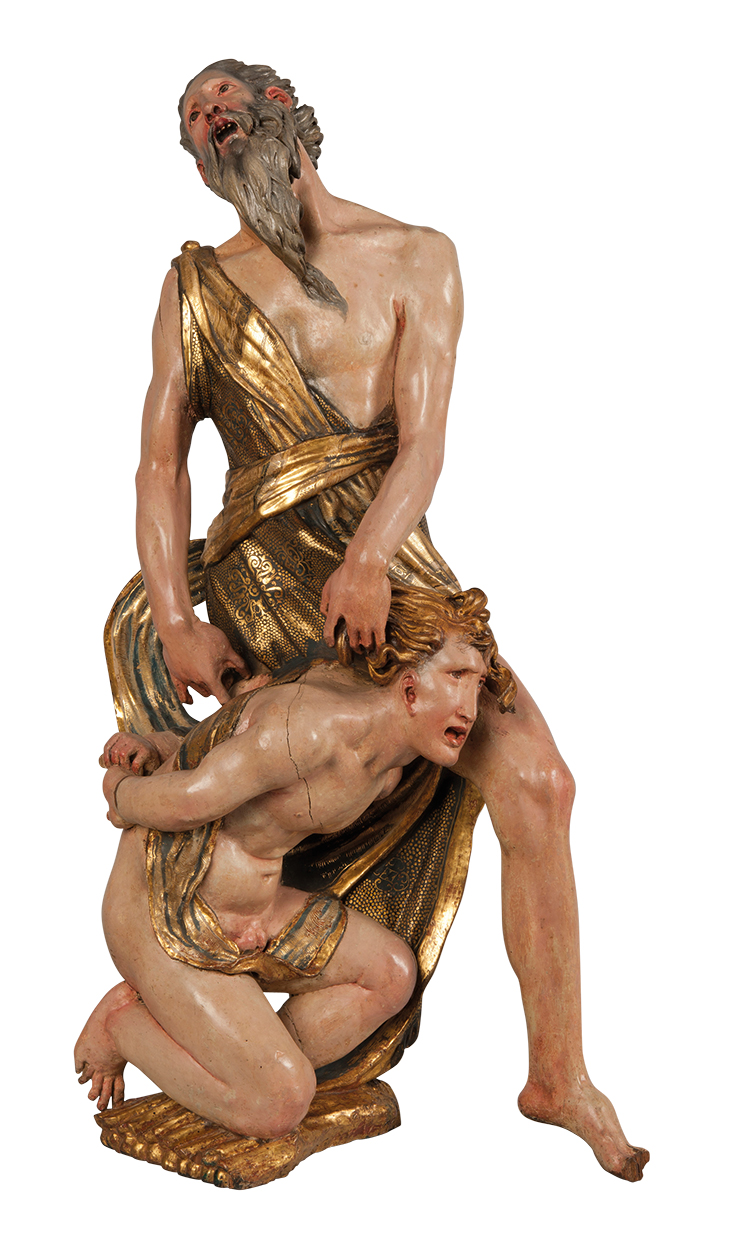
The Sacrifice of Isaac (1526–33), Alonso Berruguete. Photo: Javier Muñoz and Paz Pastor; © Museo Nacional de Escultura, Valladolid
On returning to Washington, I received permission to proceed with the show, thankful that Mark Roglán, director of the Meadows Museum in Dallas, was eager for his institution to serve as the second venue. My thoughts then turned to the catalogue. Although my study of Berruguete was in its early stages, I could already tell that important aspects of his life and art were in need of critical reappraisal. One area that seemed to be crying for new research was his activities as a draughtsman, which led me to Mark McDonald in the prints and drawings department at the Metropolitan Museum of Art, who became my co-curator. McDonald had been interested in Berruguete’s drawings for some time and was keen to rethink the criteria for attributing them, aware that before we could answer how the practice of drawing served Berruguete, we had to know which drawings were by him.
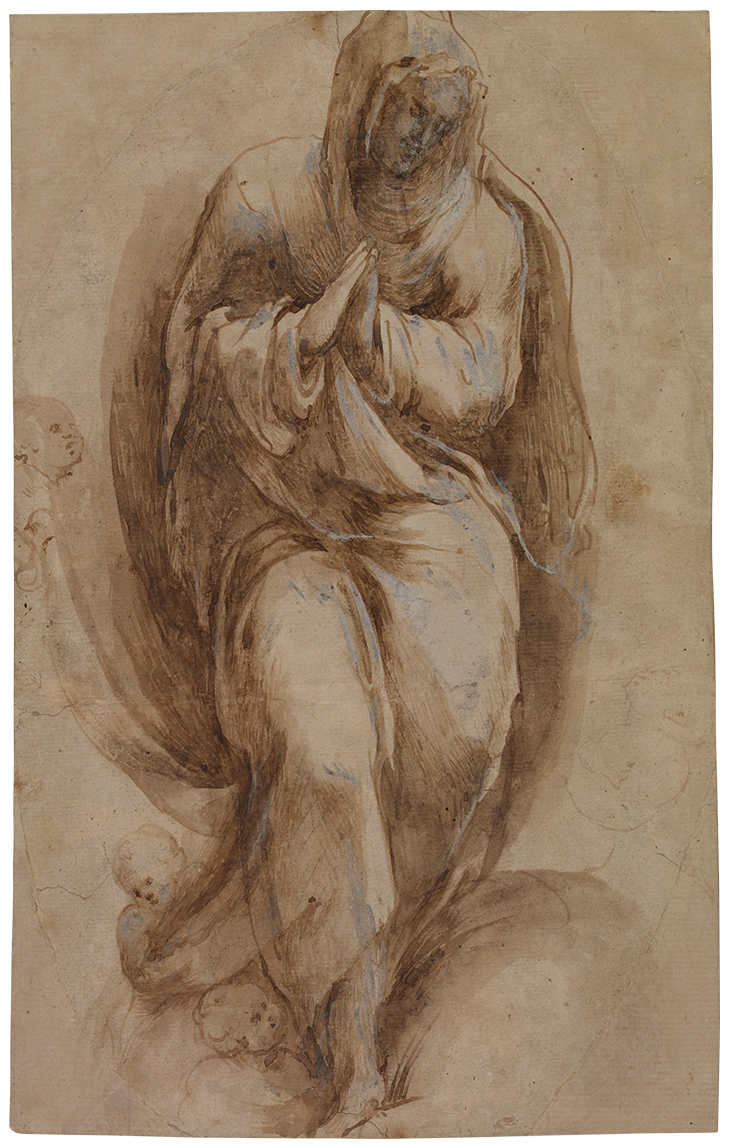
The Assumption of the Virgin (c. 1550–60), Alonso Berruguete. Photo: © The Trustees of the British Museum, London
As the first Spanish artist with a recognisable corpus of drawings, Berruguete was indebted to his experience in Italy, where he worked from around 1506 until 1518, primarily as a painter. During his time there he could not fail to appreciate how Italian artists treated drawing as an indispensable tool of planning. He made their approach his own, which proved helpful on his return to Spain, when he decided to branch out into the more lucrative field of retablos. Both the exhibition and the catalogue drive home the point that unless Berruguete had embraced the role of chief designer – and thus been a committed draughtsman – he could never have kept up with the demand for his enormous retablos and the many paintings and sculptures required to decorate them. He used drawings not only to plan his works, but also to communicate his designs to his many talented assistants, who were responsible for carving and decorating his sculptures. Among the ways the exhibition conveys the realities of his working process is with a selection of the roughly 25 drawings that can be reliably ascribed to him. These range in type from quick pen-and-ink sketches to more controlled works in chalk and other media, such as his study of the Assumption of the Virgin, now in the British Museum. The exhibition also engages the theme of the workshop by encouraging visitors to look closely at his sculptures and consider whether they all seem to be by the same hand and to question which hand is even his.
As McDonald and I wrestled with how to frame Berruguete’s reputation as one of the most revolutionary artists of Renaissance Spain, we grew increasingly sceptical of the dominant view that the reason he was transformative – and thus great – was because he had gone to Italy and absorbed the lessons of Michelangelo and mannerist artists like Pontormo. While there is no denying that aspects of his art reflect his knowledge of Italian models and that he was ahead of his colleagues in Castile on that front, it is impossible to see his art as anything but Spanish. Berruguete was able to see Italy through the lens of Castile, appreciating all that was visually compelling about the arts of his homeland, including the use of gilding, the format of the retablo, and the taste for unnatural – even bizarre – forms.
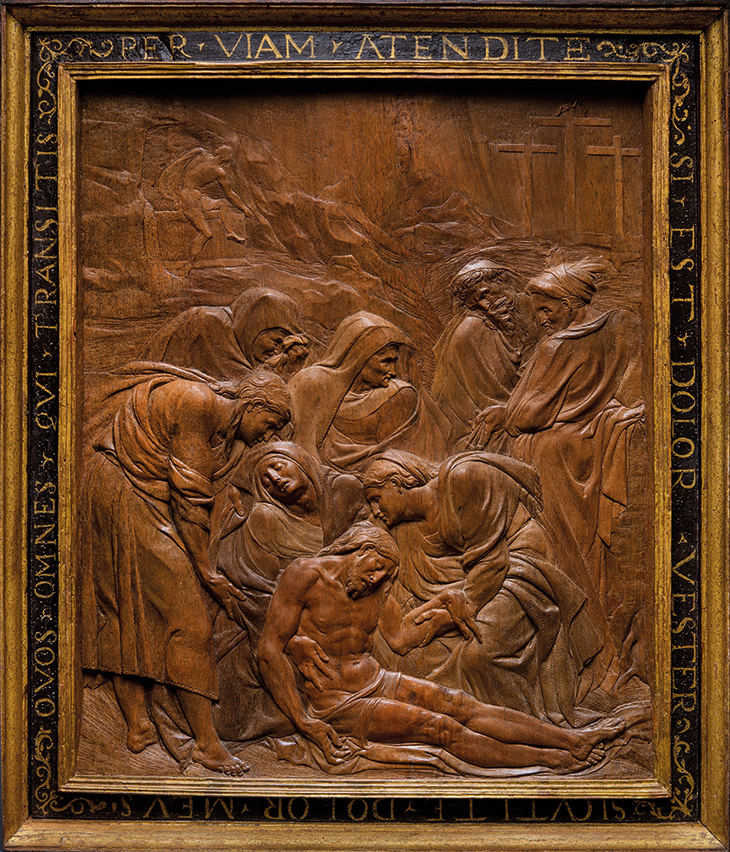
The Lamentation of Christ (c. 1518–19), Bartolomé Ordóñez
Our hope is that visitors to the exhibition and readers of the catalogue will recognise that Berruguete could not have developed into the artist he was without Spain, which stimulated him in ways that Italy could not have. This is more easily demonstrated in the catalogue, where a fuller picture of the exceptional richness of his immediate artistic environment can be presented. The exhibition makes this argument with a group of paintings and sculptures by several of the Spanish artists who are likely to have influenced his imagination most strongly, including his father, the distinguished painter Pedro Berruguete (c. 1450–1504). Bartolomé Ordóñez, a sculptor of exceptional talent from Burgos who was approximately the same age as Alonso Berruguete, is also represented with two of his finest sculptures, both in private collections in the United States. These are both sculptures Berruguete may have seen in Barcelona in 1519.
A film concludes the exhibition, celebrating those works by Berruguete that cannot travel, such as his alabaster group of the Transfiguration of Christ (1543–46) that crowns the choir of Toledo cathedral. As the camera flies through the cathedral’s vast interior and circles the sculpture, Berruguete’s wondrous abilities become powerfully evident.
‘Alonso Berruguete: First Sculptor of Renaissance Spain’ is at the National Gallery of Art, Washington, D.C., until 17 February 2020.
From the October 2019 issue of Apollo. Preview and subscribe here.
Unlimited access from just $16 every 3 months
Subscribe to get unlimited and exclusive access to the top art stories, interviews and exhibition reviews.


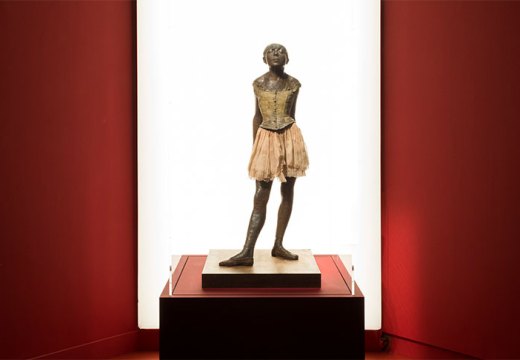
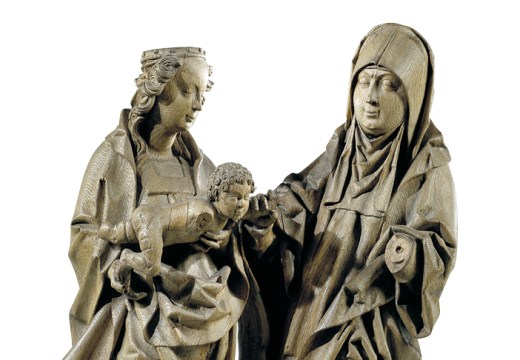
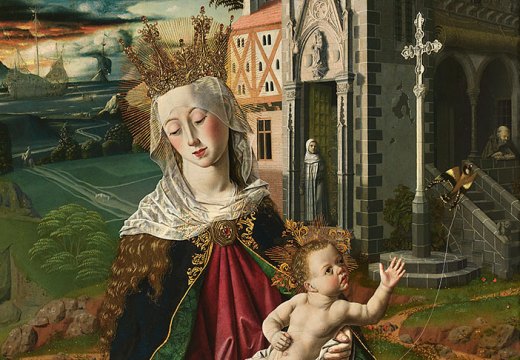









![Masterpiece [Re]discovery 2022. Photo: Ben Fisher Photography, courtesy of Masterpiece London](http://www.apollo-magazine.com/wp-content/uploads/2022/07/MPL2022_4263.jpg)
Has the Fitzwilliam got its rehang right?